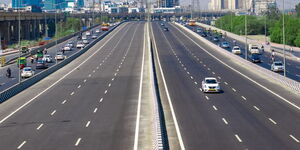The Kenya Railways Corporation has outlined measures to promote personal safety when boarding and disembarking from trains, aiming to enhance the efficiency and safety its systems.
Kenya Railways emphasises that it gives priority to the safety of passengers, employees, partners and the general public when on and around the trains.
Among the safety measures include observing the yellow line, waiting for the doors to open to using grab rails for stability.
Stand behind the yellow line until the train comes to a complete stop.
The yellow line serves to prevent passengers from accidentally falling onto the railway tracks or being struck by oncoming trains.
Proximity to the line can induce dizziness that increases the risk of someone falling onto the rail tracks.
Do not force doors open or attempt to board when the train is leaving the platform.
If a passenger misses their train, it is advised to wait for the next scheduled one rather than attempting to catch a train that is already in motion.
Allow other passengers to step off the train before you board.
This ensures a smooth transition between those boarding and those alighting, which in turn reduces time wastage during round trips. It also prevents cases of collision and falling among passengers.
Station attendants and train crew will assist passengers with special needs to board the train.
Station attendants have been given training on how to handle people with disability, including giving them priority when boarding and getting off trains.
If you are travelling with a pram or a shopping trolley, board at the front carriage so you are visible to the driver.
Passengers with heavy luggage are subject to specific guidelines set by train operators, including pointers on getting off and on the train, and ensuring utilization of spaces allocated for heavy luggage.
When boarding the train, enter the pram first and lift the back in if the train isn't level with the platform.
To ensure there is stability, even distribution of weight on the pram prevents trips and falls, and further, to prevent the pram from rolling away when exiting the train, ensure you step off first and then pull the pram towards you.
Use the grab rails to steady yourself when boarding or alighting to steady yourself.
Grab rails are strategically placed to help passengers comfortably board and alight trains, by giving them stability, especially in cases of frail platforms placed on train doorways.
Prepare to alight before reaching your destination station.
This proactive approach helps minimise time wastage at various drop-off points. However, passengers should ensure they have something to hold onto to maintain balance when the train comes to a halt.
The corporation, in efforts to ensure its clients are safe, has encouraged members of the public to employ the outlined guidelines and to further reduce cases of accidents and delays while using the train system in the country.
According to the Kenya Railways Corporation Act, individuals travelling in any part of a train, vessel, or vehicle other than areas typically designated for passenger use while travelling, whether with or without permission, are not eligible for compensation in the event of an injury or accident involving the train.
"The Corporation shall not be liable for the loss of life of, or for personal injury to, any passenger except where the loss of life or personal injury is caused by the want of ordinary care, diligence or skill on the part of the Corporation or of any employee," the Act reads in part.












